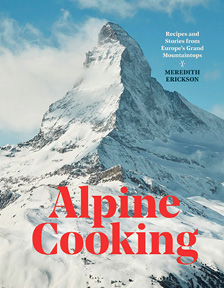Skis in the Art of War
Kalle Bror Emil Aejmelaeus-Äimä (1882–1935) grew up on skis in Finland, when it was still a duchy in the Russian Empire. At age 17 he ran off to fight in the Boer War, on the losing side. He then fought in a South American revolution, became a sea captain and joined the U.S. Army as a cavalry sergeant stationed in Texas. He then worked as a cowboy.
Back in Europe in 1906, he entered the Imperial military academy in St Petersburg, became a Russian cavalry officer stationed near Kiev, earned a degree in archaeology (a cover for spying in Ottoman lands), taught skiing and fencing, and competed in the first modern pentathlon at the 1912 Olympics. That year he wrote Skis in the Art of War, in Russian, hoping to update Russian Army skiing tactics based on the Finnish model. He barely survived cavalry action in the Great War.
After the Bolshevik Revolution, Finland declared independence, and Eimeleus joined the Finnish army to help win a civil war with the local communists. He joined Finland’s right-wing government as head of the War Office, as adjutant to two presidents, and later, as military attaché in London, Moscow and The Hague. The new Soviet Army took skiing seriously, but not seriously enough: In the Winter War of 1939–1940 the Finnish army, 20,000 strong, inflicted half a million casualties on Soviet troops. In response, the Soviet government organized a massive ski mobilization prior to the German invasion in 1941. The Soviet counteroffensive against Nazi Germany during the winter of 1941–1942 owed much of its success to the ski battalions formed during the ski mobilization, and to Skis in the Art of War.
This new translation by William D. Frank, in collaboration with ISHA’s own E. John B. Allen, includes most of the original illustrations, plus essays on the historical context of European military skiing by the two collaborators. The footnotes contain a wealth of historical detail. Frank, a competitive biathlete in the early 1980s, is now a leading authority on the history of biathlon, especially in Russia. Skiing History published his fine history of Russian biathlon in the June 2009 issue. He expanded that work into a doctoral dissertation in history at the University of Washington, and it became his book Everyone to Skis!, which won the ISHA Ullr Award in 2015. —Seth Masia
Skis in the Art of War by K.B.E.E. Eimeleus. Translation and commentary by William D. Frank, with additional commentary by E. John B. Allen. 288 pages. Northern Illinois University/Cornell University Press, $37.95 hardbound; Kindle edition $9.95. Winner: 2019 ISHA Ullr Award.
 Alpine Cooking
Alpine Cooking
This is a lushly photographed cookbook and travelogue showcasing the regional cuisines of the Alps, including 80 recipes for the elegant, rustic dishes served in the chalets and mountain huts situated among the alpine peaks of Italy, Austria, Switzerland, and France.
In Alpine Cooking, food writer Meredith Erickson travels through Europe’s Alps—by car, on foot, and via funicular—collecting the recipes and stories of the legendary stubes, chalets, and refugios. On the menu is an eclectic mix of mountain dishes: radicchio and speck dumplings, fondue brioche, the best schnitzel recipe, Bombardinos, warming soups, wine cave fonduta, a Chartreuse soufflé, and a host of decadent strudels and confections (Salzburger Nockerl, anyone?) served with a bottle of Riesling plucked from the snow bank beside your dining table.
Organized by country and including logistical tips, detailed maps and narrative interludes discussing alpine art and wine, the Tour de France, high-altitude railways, grand European hotels, and other essential topics, this gorgeous and spectacularly photographed cookbook is a romantic ode to life in the mountains for food lovers, travelers, skiers, hikers, and anyone who feels the pull of the peaks.
Erickson has co-authored The Art of Living According to Joe Beef, Le Pigeon, Olympia Provisions, Kristen Kish Cooking, and Claridge’s: The Cookbook. Among other titles, she has written for The New York Times, Saveur and Condé Nast Traveler. 
Alpine Cooking: Recipes and Stories from Europe’s Grand Mountaintops by Meredith Erikson. Published by Ten Speed Press (2019), hardcover, 352 pages; $50 on Amazon. Winner: 2019 ISHA Baldur Award.